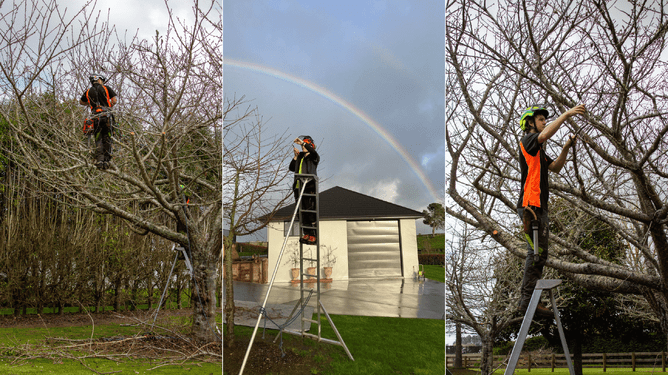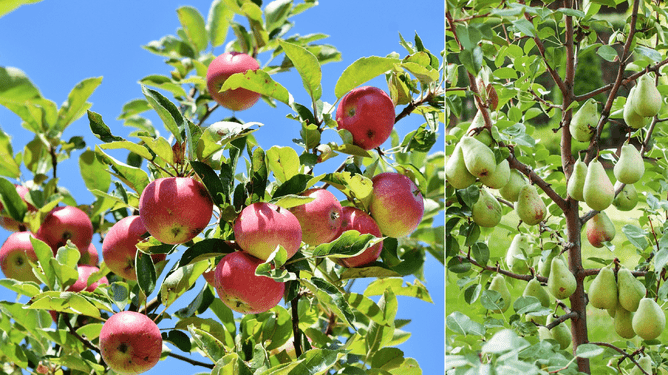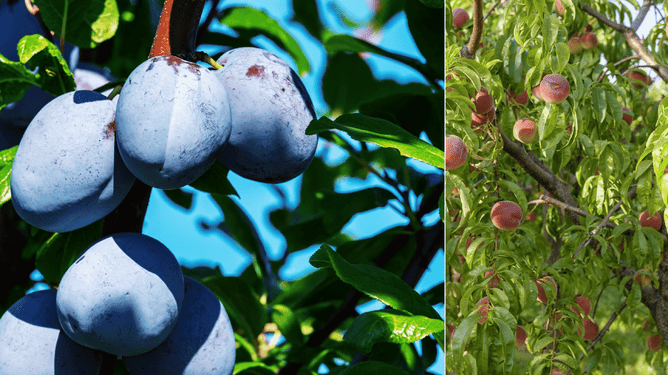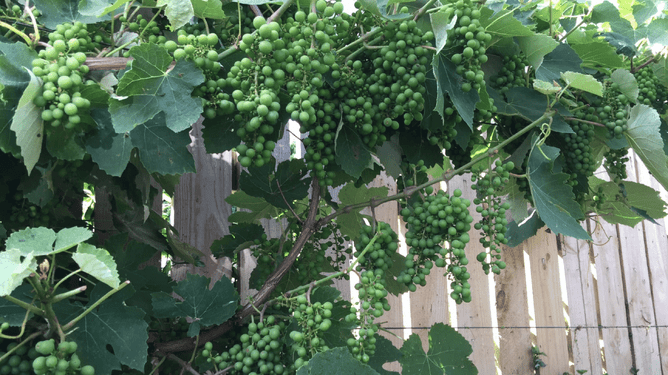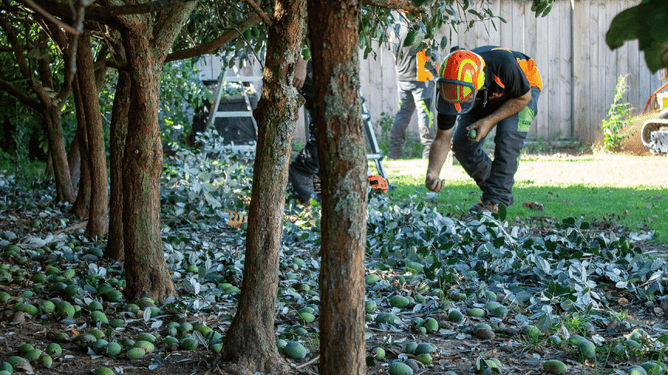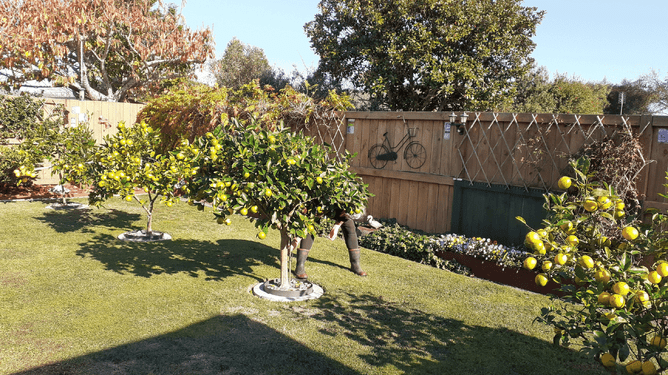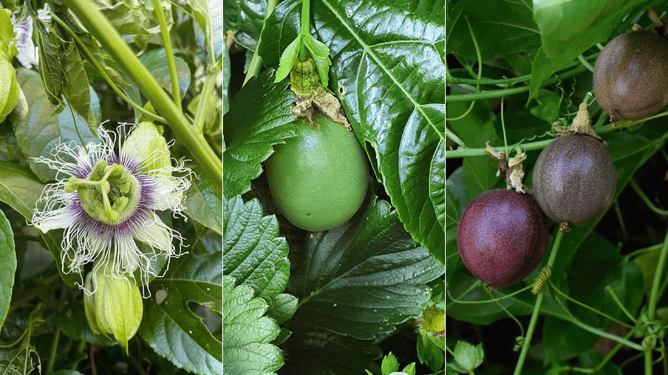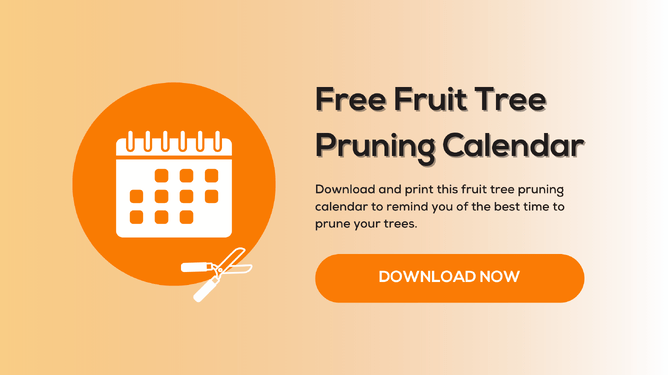When is the best time to prune fruit trees?
We often get this question from our clients because it always seems confusing since every fruit tree is different.
So we decided to gather the most common fruit trees in the Waikato, New Zealand, in this blog article and explain when to prune and give tips on how to prune fruit trees.
We will explain in detail the pruning of the following fruit trees:
Pip & Stone fruit trees: apple, pear, nectarine, peach, apricot, plum, cherry, avocado and grapes.
Feijoa trees
Citrus trees: lemon, lime, orange, mandarin and grapefruit.
Passionfruit tree
To download your copy of the Fruit Tree Pruning Calendar, click here.
General Fruit Tree Pruning Information
We suggest pruning fruit trees in autumn or winter so no pests and diseases can enter the tree.
Fruit tree pruning is essential for the following reasons:
Fruit Tree Pruning encourages the renewal of fruiting wood to get the best crops.
Fruit Tree Pruning ensures good-quality fruit and improves fruit size.
Thinning a fruit tree enhances the airflow and allows more light into the tree.
It removes any diseased parts.
It controls a tree's height, so you can reach it while harvesting.
When pruning a fruit tree:
Always prune back to a growth point.
Prune on a sunny and still day, not when it's raining and windy.
Make sure your cut is on a 45-degree angle. It will allow the tree to heal from the pruning cut naturally.
Don't use a crapy rusty tool to prune your fruit tree because it opens the tree up for infection. Would a surgeon use a blunt and rusty scalpel for surgeries? No, they wouldn't. So the same applies to pruning trees.
Fruit Tree Pruning - Pip and Stone Fruit Trees
Apple and Pear Trees
We recommend pruning apple and pear trees every winter after the leaf drop before the buds appear to ensure good fruit crops for the following season.
Unfortunately, apple and peach trees have the most pests and diseases. For example, peaches are prone to leaf curl, a fungal disease that makes the leaf curl. The best way to stop the spread of this disease is to spray with a copper fungal product before and after the leaves come out.
Apple trees
Pruning apple trees is essential to shape them to the desired form for the first couple of years.
They bear fruit on the same lateral spur branches from the main leading stem for many years, so it’s essential to avoid pruning these off because you won’t get any crop.
A common pest found on apple trees is spider mites. If you notice tiny white or yellow spots on your leaves, silky webs woven around the tree leaves or a yellow appearance in certain parts of the tree, you will have spider mites.
To treat an infestation, you can buy various spray products to eliminate them, like Yates Nature’s Way Organic Citrus, Vegie and Ornamental Spray. If you prefer a more natural insecticide, you can use Neem Oil, which is chemical-free.
Pear Trees
They are relatively low-maintenance. Since they grow vertically, prune the canopy to maintain a good fruit crop and avoid fungal diseases when small branches start growing.
They also grow on spurs and require similar treatment to apple trees.
Nectarine, Peach, Apricot, Plum, Cherry and Avocado Trees
Generally, cherry and apricot trees don’t fruit very well in the Waikato region because it isn’t cold enough compared to Hawkes Bay and Central Otago.
Most commercial production orchards will prune right after harvest in late summer to boost regrowth and ensure the best fruit production for the following season. Although, it’s not necessary to prune at that time of the year if you only have a small number of fruit trees on your property. Therefore, we recommend pruning in autumn to avoid the spread of pests and diseases.
We recommend applying a pruning paste to seal the damage and prevent infection if you remove larger limbs.
Pests & Diseases
Stone fruits can be affected by fruit moths, aphids, leaf curls, brown rot, shot holes, cankerworms and rust. For prevention, spraying with an organic copper oxychloride solution in autumn and winter will control most diseases. For more info, please read our article about the importance of spraying fruit trees.
Avocado Trees
Don’t be afraid to prune back significantly when pruning avocado trees since they respond very well. If you don’t take the time to prune them, they will overgrow.
To grow an avocado, you must be patient because it can take up to seven years to fruit.
When you buy an avocado tree from the nursery, ensure it’s grafted, joining two plants together, because it won’t produce fruit. Although they usually are always pre-grafted.
Furthermore, avocado trees are susceptible to whitefly, scale and mealybug at a young age because it’s normal for nature to be attracted to the smell and taste of fruit trees.
Plum and Cherry Trees
Like apple and pear trees, plums and cherries mainly fruit on two to three-year-old wood, so keeping that stem for a good crop the following year is vital.
Grapevines
We recommend yearly pruning to avoid heavy and tangled shoots. Like avocados, they can also handle a hard prune. When they are dormant, prune them back hard to create a framework.
Additionally, ongoing pruning in summer is essential for healthy crops. It’s vital to prune grapes to increase light and airflow in the vine for better production. You may want to consider removing bunches of grapes to avoid overcrowding; this is referred to as “thinning” to optimise growth.
We suggest having four foremost central leaders, depending on the size, for optimal fruit production and getting the best support. Ensure they are well supported, generally achieved via looping the vine around a wire.
One of our senior arborist team members, Mike, has previous experience working in vineyards in New Zealand. Here are some of his tips when pruning grapes:
Pruning techniques vary from white to red grapes. Depending on your goal, remove the leaf to allow air and light penetration around the fruit.
If you can control the watering of your vine, this can alter the taste of your grapes. Remove any affected fruit immediately; leaving them only encourages further infestation and wasp invasions. Always prune or return the leaf to a growth node for plant health.
If you have a healthy and excessive collection of fruit on your vine, remove and thin the condensed clusters to allow for healthier growth. Be very careful with fertiliser applications. This can result in a sudden fruit increase, resulting in fruit distortion. Vines respond well in full sun yet are protected from the elements if possible.
Grapevine Pests & Diseases
Like any other fruit tree, grapevines are susceptible to pests and diseases like black spots and powdery mildew. However, both can be controlled by thinning the foliage to increase light and airflow. You can also spray the grapes with a fungicide for extra added protection.
Fruit Tree Pruning - Feijoas
Feijoa trees typically fruit from late summer to autumn. We then recommend pruning it yearly, right after fruiting.
It’s a versatile tree, you can have it as a hedge, and it’s low maintenance. The branches are soft, so it’s easy to trim or prune. However, they need to be a reasonable size, so not too big, because the branches can snap easily.
If someone forgets to care for them properly, feijoa trees can also be pollarded or heavily reduced as they respond well to this.
We see more and more of the guava moth in parts of the Waikato. The guava moth originates in Australia but has been around since the last 1990s. The signs to look out for are premature fruit drops, bruised fruit, exit holes or maybe larvae excrement. Sadly, they target any fruit-bearing tree.
If you have an infected tree,
Don’t compost the fruit as it can spread, so dispose of it carefully.
Don’t leave infected fruit around the tree’s base, as this will be a source of infection next season.
Cover the tree after flowering with a fine mesh cloth to stop the moths from laying their larvae in the developing fruit.
It’s generally quite hard to control the guava moth. There are a couple of ways to eliminate them, including:
Fruit Tree Pruning - Citrus Trees
Citrus trees are a classic kiwi household staple. Everyone has at least one type of citrus fruit growing in their backyard.
There are wide varieties of citrus trees. They include:
Lemon tree
Lime tree
Orange tree
Mandarin tree
Grapefruit tree
It is always best to prune citrus trees in winter to avoid lemon tree borer attacks. This native pest larva digs its way through the trees causing branches to die. If you inspect your trees and notice branches that are dying back, that is often a sign that the tree borer is active.
The borer is active from spring to autumn. So it’s best to prune in winter to avoid attracting it because it loves the smell of the wood when the citrus trees are pruned.
Pruning in winter also increases the airflow in the citrus tree. In addition, it helps to control sooty mould, a black sticky substance on the tree leaf caused by insects like aphids, scale, mealybugs, and whiteflies that secrete honeydew.
Fruit Tree Pruning - Passionfruit Trees
Passionfruit trees can sometimes be a hit or miss. Dan, our operation manager, said: “It’s a very temperamental plant”. The fruit thrives in the warmer parts of New Zealand and is an excellent addition to your garden with attractive flowers.
If you prune it too hard, it can die. When pruning in autumn, remove dark leaves off the vine, and cut out weak, dead and criss-cross vines to improve air circulation and remove the risk of diseases.
Some of our tips for growing passionfruit:
It needs a well-shaded growing environment to thrive.
Water well during summer months.
Harvest early morning or evening before the sun burns the fruit when it’s ready to harvest.
It prefers dry soil conditions, but the fruit will respond very well when wet. Let’s be honest; that doesn’t make any sense.
Download Marc Doyle Treework's Free Fruit Tree Pruning Calendar below.
Keep it as a reminder and refresher of when to prune your fruit trees.
Our overall recommendation is to prune in autumn/winter to avoid the spread of pests and diseases, use clean and sharp tools, always cut back to the growth node on a 45% angle and have fun!
And don’t be scared of pruning fruit trees. The limbs will grow back healthier.
Please contact our team for more information about pruning fruit trees or if you need some help with pruning your trees at home.
If you want to learn more about pruning fruit trees, read our Ultimate Guide on Pruning Fruit Trees
